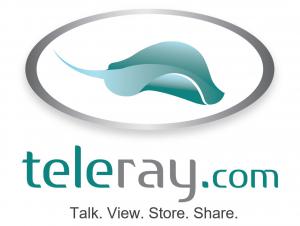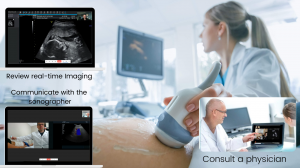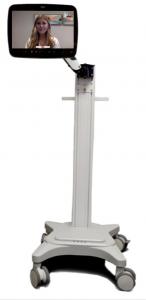Doctor can visit rural sites, patients, offices, and consult with specialists from anywhere as if they were in the room.
This gives immediate access with real-time tools to make a diagnosis from anywhere on any device.”
AUSTIN, TX, UNITED STATES, April 9, 2021 /EINPresswire.com/ -- As we enter further into 2021 and face the new normal of healthcare, there will be a focus on getting specialized care to patients that need it regardless of their location. Whether it is an emergency stroke patient, a high-risk pregnancy, or an on-site emergency call with a paramedic, the need for a physician to be able to review real-time imaging from an ultrasound or other imaging technology will be a lifesaver. Technology that connects healthcare providers and technologists with doctors and specialists is now available and being used by proactive sites. There are multiple medical situations where a specialist or higher-level professional must view images and consult in how they are acquired. Remotely viewing the imaging as it is taking place results in time-saving and lifesaving practice. COVID 19 has added to the triage issues in receiving patients in critical care for maternal-fetal medicine, stroke, and other high-risk patients.— Dr. Scalia
During this pandemic, the United States faces a growing shortage of medical specialists. A report from Merritt Hawkins, the US leading physician search firm, indicates a significant lack of medical specialists. The Review reveals the types of physicians that hospitals and healthcare facilities are seeking nationwide. It indicates that 78% of Merritt Hawkins' recruiting engagements were for specialists over the last year, up from 67% four years ago. Driving this demand is the aging patient demographic. Over 10,000 baby boomers turn 65 every day, and patients in this age group tend to visit a physician at approximately three times the rate of younger people. While senior citizens represent only 14% of the population, they account for 34% of all inpatient procedures and 37% of all diagnostic tests and treatments, It is specialists who care for cardiac, stroke, bones, and mental health of older patients and more of them will be needed as the trend continues. This demographic does not consider young adult issues such as maternal-fetal medicine.
Gaining access to a specialist will become more and more difficult. Technology can be a saving grace in getting more specialists in front of and caring for more patients without risk of exposure and much higher efficiency. TeleRay is solving these issues in telehealth with a technology called TeleRay Live. This platform delivers face-to-face consultation while viewing the patient and imaging in real-time. It provides quality by utilizing peer-to-peer connections and high-speed cellular networks when bandwidth is low. Physicians may review real-time imaging that is taking place in the field, rural areas, and practices outside of their local area- or anywhere in the world!
Dr. Chris Scalia one of TeleRay?s users, said, "doctors and specialists can use TeleRay Live in many situations." He explained that TeleRay could view modalities such as ultrasound in real-time from remote locations. He said, "Emergency responders, maternal-fetal medicine doctors, cardiologists, and more can view the patient, the modality, and speak to the sonographer or technologist to get results that matter." Ultrasounds can determine internal bleeding, injuries, and fractures miles away.
Dr. Scalia likes to talk about the platform's advantages, including the storage, sharing, and access to images after they are captured. "This gives immediate access with real-time tools to make a diagnosis from anywhere on any device." He continued, "Its prime time for a platform like this that combines telehealth with radiology, TeleRay is the only platform that offers real-time viewing of the modalities which can be critical in high-risk situations where a specialist can virtually look over the shoulder of the sonographer or technologist as if they're in the room to adjust, view, and consult."
The financial benefits to complete telehealth platforms are immense. Beyond the clinical and triage benefits, implementing a virtual care option can help offset the revenue decline due to reduced visits. Many professionals will be looking for technology to solve growing problems with access and care in 2021, and now there are solutions to manage the situation. The main issue is making sure the connection is high-quality speed and access to additional data and images. Good quality helps ensure better outcomes, which is the goal of all healthcare visits.
About TeleRay: TeleRay is a technology leader with the only telehealth radiology platform for the management and distribution of medical images and patient information. We offer the most secure platform for interactive consultation while viewing images, reports, while still seeing each other, including family members or specialists on a multi-person call. TeleRay is widely recognized as the most reliable and advanced software on the market, with multiple filed patents at the best value. With more than 3000 users, along with 70% of the top 50 medical centers including Cleveland Clinic, Cedars-Sinai, Harvard, Cornell, Columbia, Northwestern, Shriners, Barnes-Jewish, Beth Israel, UPMC, UPENN, NY Presbyterian, and many more. Join the fastest growing telehealth & image management family in the US.
Cody Neville
TeleRay
cody@teleray.com




